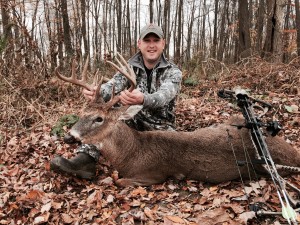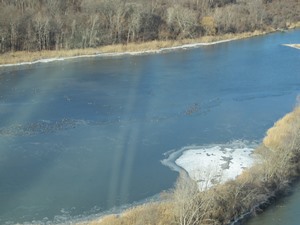Hijacked by anti-hunters, the term ‘trophy hunting’ has taken on a negative connotation in society – it’s time to take it back. Here’s a start to reframing the trophy-hunting discussion with non-hunters.
Defining a Trophy
When news anchors and the general public throw the term ‘trophy hunting’ around, they’re usually speaking in a very broad sense that assaults their emotions and is an affront to almost everything that modern, regulated hunters and hunting represents. The term is a misnomer, but they don’t even realize it.
A trophy is a very personal thing. For some just killing an animal to eat is reward enough. For others, a mature animal that is more wary is the goal. Still, for others, a very specific animal, or at least one meeting very high standards, is the ultimate goal.
This is all dependent upon the person, their skill level and experience in hunting (see infographic: “Evolution of a Hunter”), as well as understanding of the species they’re targeting. A trophy is a crowning achievement for an individual. Period.
What it’s not
The popular myth of trophy hunting is that it’s simply hubristic killing by hunters for display upon a wall – which is only done for a head, hide or horns. The underlying belief is that the rest of the animal is left where it died and goes to waste.
This is the perception anti-hunters have created, and which they are framing hunters every chance they get. From “Cecil” the lion in Zimbabwe, Africa, to the proposed black-bear hunt under protest in Florida, anti-hunting activists and organizations cry ‘trophy hunt’ to convey what they believe is the senseless killing of animals – without regard to the associated science, management and ecosystem-wide benefits.
It’s an effective tactic that resonates with the public quickly. Those two words immediately generate an affront to the public’s sensibilities, and creates another hurdle we have to overcome to maintain scientific, and not emotional, management of our flora and fauna.
What it is
The fact is, what animal-rights’ activists portray is not just an affront to the public’s sensibilities, the waste of an animal is a disgrace to the sensibilities of a hunter, as well. When it comes to a ‘trophy hunt,’ two points often overlooked by outraged activists, the media and the public include: A hunting season is not state-sanctioned slaughter. Every state has wanton waste laws that mandate the harvest and use of meat, hides or other body parts to ensure that the animal is not just wasted, and that the number of individuals taken is in accord with the supporting habitat and predator-prey balance of the area.
 A ‘trophy’ animal and its use as table fare are not mutually exclusive. An animal can be a specimen worthy of both taxidermy and the table.
A ‘trophy’ animal and its use as table fare are not mutually exclusive. An animal can be a specimen worthy of both taxidermy and the table.
A trophy hunter is simply someone who has placed self-imposed restrictions upon themselves that go above and beyond what’s dictated by the state. They are more selective, and will pass on younger animals, often those barely reaching the minimum standard, in a deeply personal pursuit to further challenge their skills and learn as much as possible about the prey they pursue. Read more


 The report breaks down forest health threats by examining insects and diseases, forest decline and ongoing forest health research. Accompanying photos and maps illustrate the pests and show the effects they have had on Michigan’s forest system.
The report breaks down forest health threats by examining insects and diseases, forest decline and ongoing forest health research. Accompanying photos and maps illustrate the pests and show the effects they have had on Michigan’s forest system. A ‘trophy’ animal and its use as table fare are not mutually exclusive. An animal can be a specimen worthy of both taxidermy and the table.
A ‘trophy’ animal and its use as table fare are not mutually exclusive. An animal can be a specimen worthy of both taxidermy and the table. Department of Natural Resources wildlife staff members recently took to the sky in small aircraft to observe and count ducks, geese and swans on southeast Michigan’s waterways. They observed 157,028 ducks, 33,468 geese and 5,896 swans in the 2016 survey.
Department of Natural Resources wildlife staff members recently took to the sky in small aircraft to observe and count ducks, geese and swans on southeast Michigan’s waterways. They observed 157,028 ducks, 33,468 geese and 5,896 swans in the 2016 survey.

